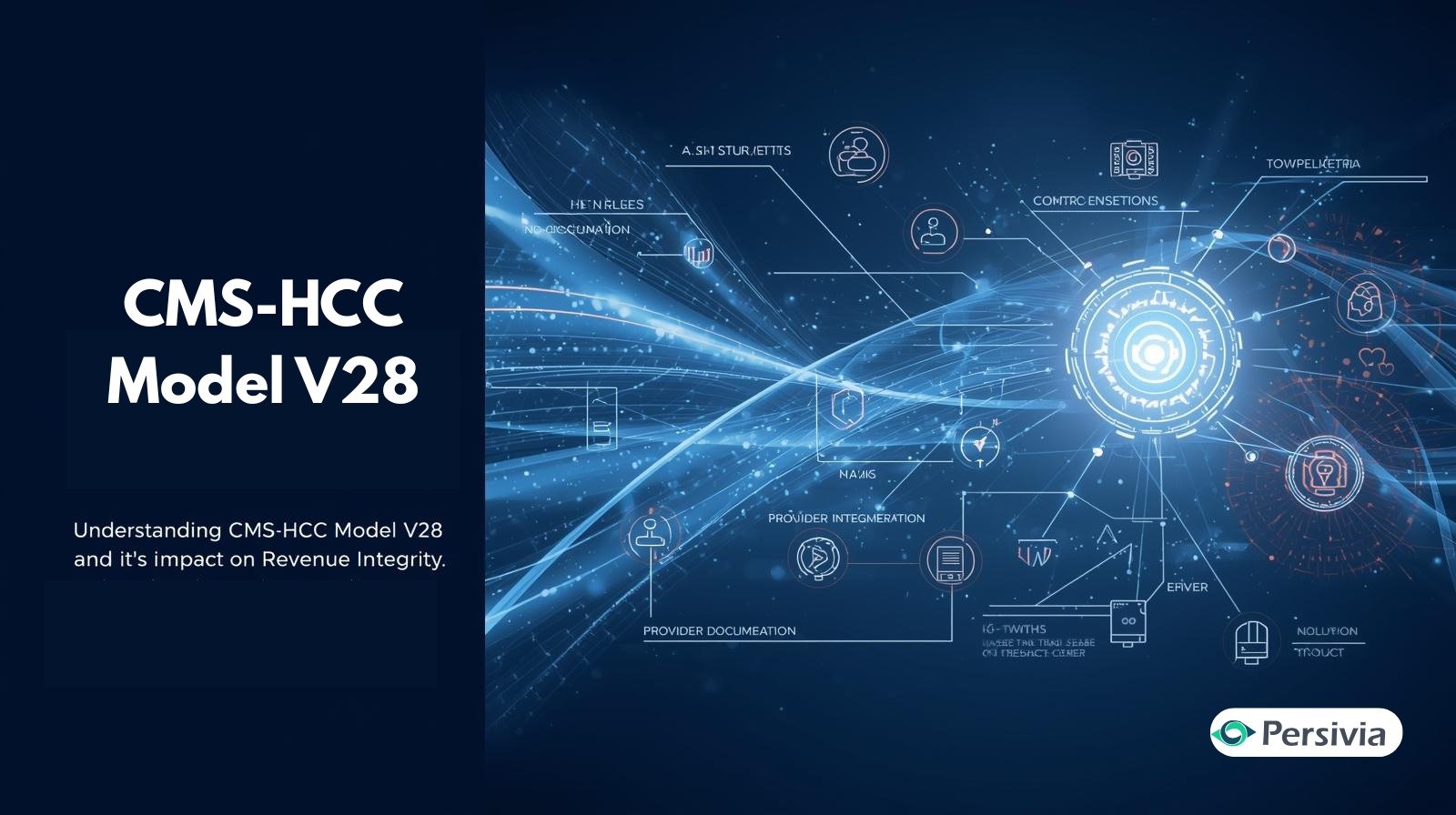Health
Understanding CMS-HCC Model V28 and Its Impact on Revenue Integrity
Published
7 days agoon
By
Prime Star
The transition to V28 represents a fundamental shift in how Medicare Advantage plans calculate risk scores and reimbursements. Organizations navigating up to 30 operational steps from provider documentation to CMS submission face growing pressure to align clinical and coding workflows. The new model requires AI-enabled open integration, bi-directional data exchange, and provider-centric systems that reduce multi-vendor complexity.
The critical question for healthcare organizations preparing for 2026 is how the CMS-HCC Model V28 will reshape their revenue integrity strategies. The shift from V24 to V28 represents a complete recalibration of how health plans manage risk adjustment. It’s a complete recalibration of how health plans capture, document, and report chronic conditions for Medicare Advantage populations.
Revenue integrity starts with accurate risk adjustment. When documentation is incomplete or coding misses diagnoses, organizations lose legitimate reimbursement. The V28 risk adjustment model introduces stricter requirements, refined disease hierarchies, and updated coefficient values that directly impact reimbursement rates. Organizations managing complex multi-vendor environments now navigate 30 distinct operational steps from initial provider documentation to final CMS submission, and each step increases the risk of errors and revenue loss.
What is the CMS-HCC Model V28?
CMS-HCC Model V28 is the updated risk adjustment framework that Medicare Advantage plans will implement in 2026 to calculate member risk scores and determine capitated payments. The model refines how Hierarchical Condition Categories capture disease severity and reflect actual care costs.
V28 introduces new HCC categories, removes outdated codes, and adjusts coefficients based on current Medicare claims data. These changes reflect today’s treatment patterns and cost trends across the Medicare population.
Key updates in V28 include:
- Refined disease hierarchies that better reflect clinical relationships
- Updated demographic factors for age and disability status
- New HCC categories for conditions previously underweighted
- Adjusted coefficients based on recent Medicare spending data
Why Does V28 Matter for Revenue Integrity?
CMS HCC V28 directly impacts how Medicare Advantage plans receive payments from CMS. Revenue integrity relies on capturing every documented condition that influences member risk scores. The model’s refined hierarchies mean conditions that previously qualified for certain HCCs may no longer meet criteria without proper documentation specificity.
When providers document conditions but coders fail to capture them, organizations lose legitimate payments. When documentation lacks specificity, valid HCC coding opportunities are lost. V28 tightens these requirements significantly.
Risk scores determine per-member-per-month payments. Even a 0.1-point change in average risk scores across 10,000 members can shift annual revenue by millions. Organizations without preparation strategies will see revenue drops as historical documentation patterns fail under new rules.
How Does V28 Differ from V24?
V28 restructures how conditions map to HCC categories and updates the statistical weights assigned to each category. The previous V24 model used hierarchies based on older claims data, while V28 incorporates recent Medicare spending patterns.
Key structural updates include:
- Disease categories are split into more granular HCCs
- New interaction terms that account for coexisting chronic conditions
- Revised demographic coefficients for age bands
- Eliminated categories for outdated disease classifications
| Aspect | V24 Model | V28 Model |
| Disease Hierarchies | Based on older claims data | Updated with recent Medicare spending patterns |
| HCC Categories | Broader groupings | More granular, condition-specific categories |
| Demographic Factors | Standard age/disability coefficients | Refined coefficients reflecting current populations |
| Documentation Requirements | General condition documentation | Requires greater clinical specificity |
| Interaction Terms | Limited condition interactions | Expanded interactions between multiple conditions |
What Challenges Do Organizations Face During the V28 Transition?
The shift to V28 risk adjustment creates operational complexity across documentation, coding, and submission workflows. Organizations managing multiple vendor systems face the biggest hurdles when one system handles provider documentation, another manages coding, and a third submits claims.
Multi-Vendor Problem
Organizations often manage dozens of steps from provider documentation to final CMS submission. Each handoff creates opportunities for information loss and delays.
Common transition challenges include:
- Aligning clinical documentation with new V28 requirements
- Training providers on updated specificity standards
- Updating coding workflows for restructured hierarchies
- Managing dual-model operations during the transition period
Clinical-Coding Disconnect
Physicians document conditions using clinical language. Coders translate that documentation into ICD-10 codes. When physicians don’t know the exact specificity coders need under V28, documentation gaps emerge.
Interoperability issues compound these problems. Patient information moves through EHRs, coding platforms, analytics tools, and submission systems. When these systems don’t exchange data seamlessly, updates made in one place fail to propagate.
How Should Organizations Prepare for V28 Implementation?
It involves organized planning of departments, not only the coding teams. Organizations must have cross-functional teams comprising physicians, coders, IT employees, and revenue cycle managers.
Building V28 Readiness Programs
Start with gap analysis. Compare current documentation patterns against V28 requirements to identify where specificity falls short.
Effective preparation strategies include:
- Creating physician education programs focused on V28 documentation requirements
- Developing incentive structures that reward documentation improvement
- Building dashboards that track V28 readiness metrics in real-time
- Running parallel testing with sample patient populations
Testing matters. Running V28 algorithms on historical data shows how patient risk scores would change under the new model. This analysis helps predict revenue impacts and identify documentation improvement opportunities.
Engaging Providers in the Transition
Physicians respond better to education than mandates. Show them specific examples of documentation that meets V28 requirements versus documentation that falls short, using real patient cases from your organization.
Training should focus on practical changes, not theoretical model details. Physicians need to know which conditions require additional specificity and what language satisfies those requirements.
What Role Does Technology Play in V28 Success?
Technology bridges the gap between clinical documentation and risk adjustment, but only when systems communicate effectively. Natural Language Processing changes the way organizations derive structured information in clinical notes.
AI and NLP for Documentation
Advanced NLP detects clinical details within physician notes and flags where documentation needs more specificity. For example, when a doctor reviews a diabetic patient, the system displays the latest A1C value, current medications, and any documented complications.
Technology capabilities that support V28 readiness:
- NLP engines that process unstructured clinical notes
- Bidirectional data exchange between EHRs and coding platforms
- Real-time HCC opportunity identification during encounters
- Dual-model displays showing both V24 and V28 impacts
- Longitudinal patient records aggregating data from multiple sources
The key is transparency. Physicians trust systems that show their reasoning. When AI suggests an HCC opportunity, it should explain why based on documented clinical evidence.
How Can Organizations Maintain Revenue Integrity During The Transition?
Revenue integrity during the V28 transition requires maintaining accurate documentation and coding under both models simultaneously. Organizations can’t wait until 2026 to start preparing for the transition period demands of running dual operations.
Strategies for Dual-Model Operations
Display both V24 and V28 opportunities to providers simultaneously. Show them how documentation affects risk scores under each model. This visibility helps providers understand what changes matter most.
Maintaining revenue integrity requires:
- Consistent documentation review cycles
- Regular coder-provider feedback sessions
- Performance dashboards showing V28 readiness trends
- Scenario testing with actual patient populations
Revenue integrity is not just about capturing more HCCs. It is concerned with the correct representation of patient acuity and facilitating the proper care planning.
Final Insights
The CMS-HCC Model V28 transition represents both a challenge and an opportunity for Medicare Advantage organizations. Updating coding workflows alone is not enough. Success depends on integrated systems that guide providers, simplify operations, and increase transparency in the risk adjustment process. Organizations that treat V28 as a chance to strengthen operations rather than a compliance burden will be better positioned for long-term success.
Persivia simplifies risk adjustment as its digital healthcare platforms combine EHR and claims, lab, and social determinant results into one trusted record. High NLP ensures the unstructured documentation is automated and the accuracy of real-time updates at the inter-system level. Show V24 and CMS HCC V28 codes to have full visibility of the transition. AI-enabled open integration helps providers focus on care quality and revenue integrity without juggling multiple vendors or fragmented workflows.
You may like

Best Replica YSL Bag in Patent Leather

Put Pen to Paper: How Custom Notebooks Can Make a Lasting Impression

From Listing to Sold: Sell A Car in Perth Without the Stress

Unlocking the Benefits of Engineered Steel Solutions for Modern Construction

Discover the Ultimate Comfort and Style of Women’s Underwear in Australia

Unlocking Performance: The Ultimate Guide to Custom PC Builds with Centre Com

Unlocking Opportunities in General Practice Recruitment: A Guide by Global Medics

Hope & Kent: How Snow Removal Technology Is Reaching B.C.’s Most Challenging Terrains

Connecting the Dots in Recruitment: How Skima AI Integrates Seamlessly with Your Hiring Stack

How Weight Loss Works: The Science, Strategy, and Success Behind Sustainable Results

Carol Kirkwood’s Journey: Her Real Age, Husband, Career, and More

Revolutionizing Healthcare: The Emergence of AI-Driven Analytics

How Machine Learning and AI are Redefining the Future?

Aliza Barber: Meet Lance Barber’s Wife, Age, Life, Profile, Career and Net Worth

Evelyn Melendez: Jordan Knight’s Wife Bio, Marriage, Family, Career and Net Worth

Ilan Tobianah Biography: Family, Marriage, Lifestyle, Career and Net Worth

Who was Alice Marrow? Everything to Know About Ice-T’s and His Mother

King Von’s Autopsy Report: The Truth Behind the Tragic Death

Meet Otelia Cox: The Supportive Wife of Tony Cox – A True Fairy Tale Romance

Tea Leoni and Tim Daly Split – A Closer Look at Their Relationship and Breakup

Best Replica YSL Bag in Patent Leather

Put Pen to Paper: How Custom Notebooks Can Make a Lasting Impression

From Listing to Sold: Sell A Car in Perth Without the Stress

Unlocking the Benefits of Engineered Steel Solutions for Modern Construction

Discover the Ultimate Comfort and Style of Women’s Underwear in Australia

Unlocking Performance: The Ultimate Guide to Custom PC Builds with Centre Com

Unlocking Opportunities in General Practice Recruitment: A Guide by Global Medics

Hope & Kent: How Snow Removal Technology Is Reaching B.C.’s Most Challenging Terrains

Connecting the Dots in Recruitment: How Skima AI Integrates Seamlessly with Your Hiring Stack

How Weight Loss Works: The Science, Strategy, and Success Behind Sustainable Results
Category
Trending
-

 News2 months ago
News2 months agoCarol Kirkwood’s Journey: Her Real Age, Husband, Career, and More
-

 Health2 years ago
Health2 years agoRevolutionizing Healthcare: The Emergence of AI-Driven Analytics
-

 Technology2 years ago
Technology2 years agoHow Machine Learning and AI are Redefining the Future?
-

 Celebrity1 year ago
Celebrity1 year agoAliza Barber: Meet Lance Barber’s Wife, Age, Life, Profile, Career and Net Worth
